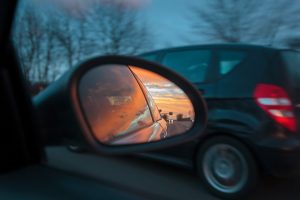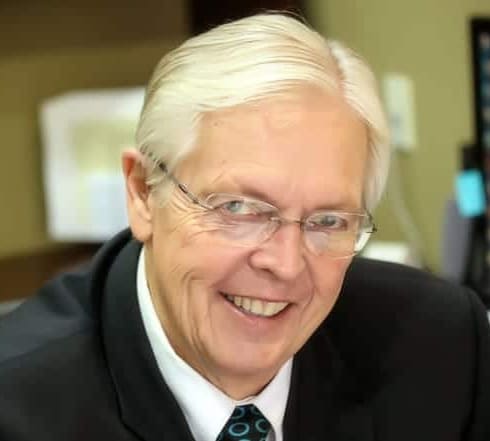How Often Should You Check Your Mirrors When Driving?
 You glance up, see a speeding truck closing fast, and ease right a split‑second before impact. That tiny mirror check just saved your bumper, maybe your neck, and certainly a nasty fight with an insurance adjuster.
You glance up, see a speeding truck closing fast, and ease right a split‑second before impact. That tiny mirror check just saved your bumper, maybe your neck, and certainly a nasty fight with an insurance adjuster.
Too many North Dakota car accidents start the same way and end in bent metal and hospital bills because someone failed to look. Regular mirror use is one of the simplest habits you can form, yet it carries enormous safety and legal consequences.
Why mirror checks save lives
The three mirrors in every passenger vehicle can give you a nearly complete picture of traffic, but only if you consult them often enough to build a mental map of what’s behind and beside you.
Know your mirrors
Correct adjustment matters as much as frequency. Tilt each side mirror just far enough for the body of your car to barely disappear from view. That overlap reduces blind spots and shortens the time your eyes leave the road when you scan.
If you drive an SUV or pickup, elevation changes can introduce new blind spots. After loading cargo or passengers, take thirty seconds to readjust your mirrors so the horizon sits in the same place on each mirror.
The mirror rhythm that works
The North Dakota Driver License Manual teaches a five‑to‑eight‑second rhythm: quick scans of all mirrors, alternating with forward scanning. Think of it like breathing. You don’t count every inhale, but you will definitely notice if the pattern stops. Once the mirror rhythm is established, your brain flags anything that breaks the pattern–an unlit motorcycle, a weaving oil‑field rig, or a tailgater riding inches from your hitch.
Mirror checks during specific maneuvers
Mirror checks also anchor specific maneuvers. Before signaling a lane change, scan your mirrors. After signaling, look again, then check over your shoulder as you drift across. While braking for a left turn, check your mirrors to be sure the driver behind is reacting to your movements.
Backing out of a grocery lot? Mirrors first, then camera, then a deliberate twist of your torso. Cameras add clarity but they can’t show fast‑moving shoppers or children darting from between trucks.
Weather and terrain challenges
North Dakota weather adds wrinkles. Blowing snow can crust over side mirrors. Dust on gravel roads clouds the rear glass. Summer rain turns side windows into kaleidoscopes. It’s important to clean these off when it’s safe to do so, and to try to keep them clear and functional.
Fog rolling off the Missouri River can turn mirrors into gray sheets, so be prepared to use rear defrosters or crack a window to clear humidity. You may need to lengthen your glance intervals, but never abandon the rhythm entirely.
Why excuses fail in court
Drivers who skip these steps reach for the oldest defense in the book: “I never saw you.” That phrase translates to jurors as “I wasn’t looking.” In negligence law, failing to maintain a proper lookout is powerful evidence of fault.
North Dakota law on proper lookout
State traffic statutes require drivers to use ordinary care when changing course or speed. Courts typically interpret that duty to include timely mirror checks, because it costs nothing and only takes a fraction of a second.
Under North Dakota’s modified comparative fault system, a driver who fails to check their mirrors before changing lanes or braking may bear the majority of fault—potentially reducing or barring their ability to recover damages if their negligence exceeds 49%. In other words, your right to compensation is strong when the other driver’s forgetfulness caused the accident.
Common crash types tied to mirror neglect
Side‑swipes on Interstate 94, rear‑enders at Bismarck construction zones, and parking‑lot backing-in crashes share a common thread—the at‑fault driver either never looked or looked too late. If you are nursing a whiplash or a fractured wrist from such a collision, focusing on recovery should be a priority.
How evidence proves mirror neglect
Insurers will try to chip away at your claim. They may allege that you “lingered in the blind spot” or “braked suddenly.” An early investigation preserves dash cam footage, electronic data, and witness memories that show the real story–the other driver skipped essential mirror sweeps.
Event data recorders (EDRs) capture steering, braking, and turn signal activity down to the millisecond. If a driver changes lanes without signaling and collides with your vehicle’s quarter panel, the absence of turn signal data—and lack of evidence indicating mirror use—can substantiate expert testimony that the driver failed to maintain a proper lookout.
After a crash, you need to take actions to protect yourself. Call 911, document vehicle positions, photograph mirror damage, and seek medical evaluation even if your pain feels minor. Soft‑tissue injuries often bloom overnight. Before chatting with an adjuster, call a lawyer who knows the roads.
What to do after a crash
A seasoned attorney will reconstruct timing using traffic cam video, black box data, and scene measurements (skid marks, for example). An expert can demonstrate that, had the driver followed a five‑second scan pattern, your car would have appeared in their side mirror for several seconds—ample time to avoid impact.
Keep every test result, prescription, and therapy invoice. A detailed medical paper trail ties pain to the crash and refutes insurer claims of pre‑existing conditions. Your lawyer can compile these records into a damages package that includes full compensation.
How Larson Law builds your case
Larson Law Injury & Accident Lawyers has spent more than forty years demanding accountability from careless drivers across Minot, Fargo, Bismarck, and the rural highways that link them. Founder Mark V. Larson is a Certified Civil Trial Specialist who refuses lowball offers from insurers unwilling to pay fair value.
The firm’s free consultation policy means you risk nothing by asking questions. Because Larson Law works on contingency, they only get paid when you do. That alignment of interests pushes them to dig deep into evidence and fight for maximum verdicts.
Their team understands that every pileup or icy‑road slide leaves real families juggling medical appointments, work, and mounting bills. They travel to clients when injuries limit mobility and never collect a fee unless they succeed.
If a driver’s mirror neglect upended your life, don’t wait. Reach out today, share your story, and let Larson Law fight for the full compensation you deserve.

Mark Larson is a Certified Civil Trial Specialist and Certified Civil Pre-Trial Specialist focusing on personal injury, car accidents, wrongful death, and oil field claims. Since 1979, Larson Law has served the injured throughout North Dakota. Read more about Mark V. Larson.
